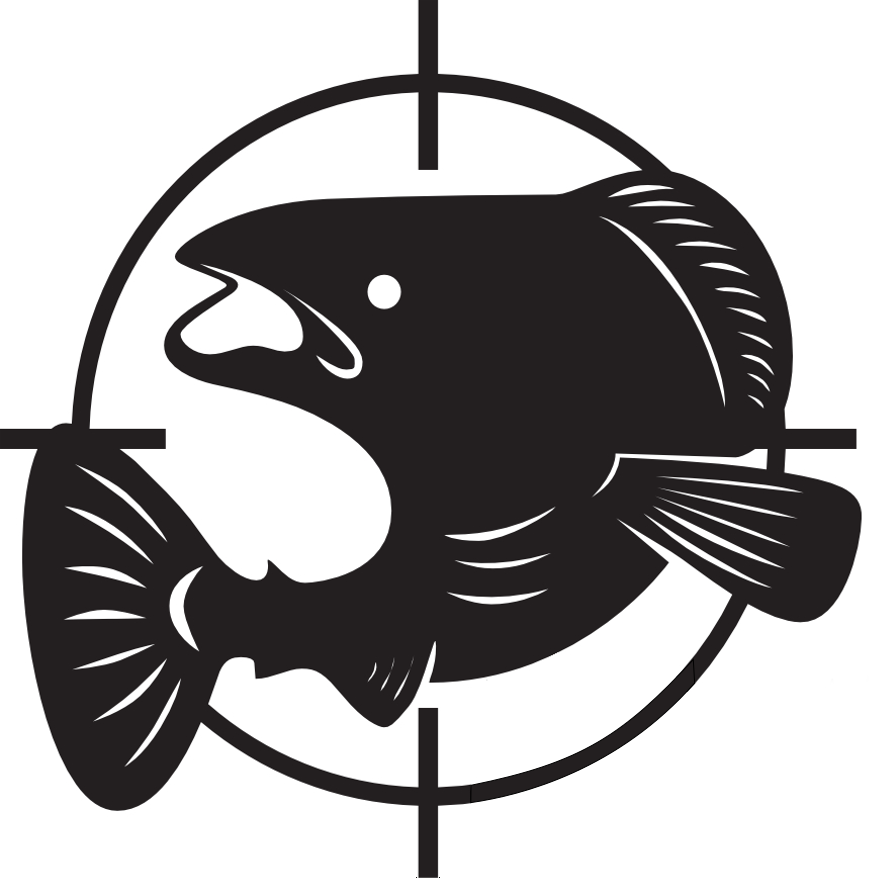Characteristics
Right (dark) and left (light) sides of Pacific halibut.Pacific halibut have diamond-shaped bodies. They are more elongated than most flatfishes, the width being about 1/3 of the length. There is a high arch in the lateral line over the pectoral fin, and it has a lunate, or crescent shaped tail, which is different from other flat fishes.[5] Small scales are embedded in the skin. Halibut have both eyes on their dark or upper side. The color on the dark side varies, but tends to assume the coloration of the ocean bottom. The underside is lighter, appearing more like the sky from below. This color adaptation allows halibut to avoid detection by both prey and predator.
[edit] FoodBeing strong swimmers, halibut are able to eat a large variety of fishes including cod, turbot, pollock, and some invertebrates such as octopus, crab and shrimp. Sometimes halibut leave the ocean bottom to feed on pelagic fish such as salmon, sand lance and herring.
[edit] Life cycleSpawning takes place during the winter months with the peak of activity occurring from December through February. Most spawning takes place off the edge of the continental shelf in deep waters of 600 to 1,500 feet (183 to 457 m). Male halibut become sexually mature at 7 or 8 years of age while females attain sexual maturity at 8 to 12 years. Females lay half a million to four million eggs annually, depending on the size of the fish.[6]
Fertilized eggs hatch after about fifteen days. Free-floating larvae float for up to six months and can be transported several hundred miles counter-clockwise by North Pacific currents. During the free-floating stage, many changes take place in the young halibut, including the movement of the left eye to the right side of the fish. During this time the young halibut rise to the surface and are carried to shallower water by prevailing currents. At six months, the halibut has its adult form and is about 1.4 inches (3.6 cm) long.[7] In the shallower water, young halibut then begin life as bottom dwellers. Most young halibut ultimately spend from five to seven years in rich, shallow nursery grounds like the Bering Sea.
Young halibut are highly migratory and generally migrate in a clockwise direction east and south throughout the Gulf of Alaska. Halibut in older age classes tend to be less migratory but continue to move predominately on a clockwise direction. Mature fish are also involved in winter spawning migrations towards deeper waters migrating across several areas in some instances [8]. Research indicated that there may be small, localized spawning populations in deep waters such as in Chatham Straight in northern Southeast Alaska. However, because of the free-floating nature of larvae and subsequent mixing of juvenile halibut from throughout the Gulf of Alaska, there is only one known genetic stock of halibut in the northern pacific.
Halibut growth rates vary depending on locations and habitat conditions, but females grow faster than males. The oldest recorded female and male were 55 years old. The largest recorded sport caught halibut was 459 pounds (208 kg) near Unalaska, AK, in 1996.[9]
Right (dark) and left (light) sides of Pacific halibut.Pacific halibut have diamond-shaped bodies. They are more elongated than most flatfishes, the width being about 1/3 of the length. There is a high arch in the lateral line over the pectoral fin, and it has a lunate, or crescent shaped tail, which is different from other flat fishes.[5] Small scales are embedded in the skin. Halibut have both eyes on their dark or upper side. The color on the dark side varies, but tends to assume the coloration of the ocean bottom. The underside is lighter, appearing more like the sky from below. This color adaptation allows halibut to avoid detection by both prey and predator.
[edit] FoodBeing strong swimmers, halibut are able to eat a large variety of fishes including cod, turbot, pollock, and some invertebrates such as octopus, crab and shrimp. Sometimes halibut leave the ocean bottom to feed on pelagic fish such as salmon, sand lance and herring.
[edit] Life cycleSpawning takes place during the winter months with the peak of activity occurring from December through February. Most spawning takes place off the edge of the continental shelf in deep waters of 600 to 1,500 feet (183 to 457 m). Male halibut become sexually mature at 7 or 8 years of age while females attain sexual maturity at 8 to 12 years. Females lay half a million to four million eggs annually, depending on the size of the fish.[6]
Fertilized eggs hatch after about fifteen days. Free-floating larvae float for up to six months and can be transported several hundred miles counter-clockwise by North Pacific currents. During the free-floating stage, many changes take place in the young halibut, including the movement of the left eye to the right side of the fish. During this time the young halibut rise to the surface and are carried to shallower water by prevailing currents. At six months, the halibut has its adult form and is about 1.4 inches (3.6 cm) long.[7] In the shallower water, young halibut then begin life as bottom dwellers. Most young halibut ultimately spend from five to seven years in rich, shallow nursery grounds like the Bering Sea.
Young halibut are highly migratory and generally migrate in a clockwise direction east and south throughout the Gulf of Alaska. Halibut in older age classes tend to be less migratory but continue to move predominately on a clockwise direction. Mature fish are also involved in winter spawning migrations towards deeper waters migrating across several areas in some instances [8]. Research indicated that there may be small, localized spawning populations in deep waters such as in Chatham Straight in northern Southeast Alaska. However, because of the free-floating nature of larvae and subsequent mixing of juvenile halibut from throughout the Gulf of Alaska, there is only one known genetic stock of halibut in the northern pacific.
Halibut growth rates vary depending on locations and habitat conditions, but females grow faster than males. The oldest recorded female and male were 55 years old. The largest recorded sport caught halibut was 459 pounds (208 kg) near Unalaska, AK, in 1996.[9]

 Home
Home






















